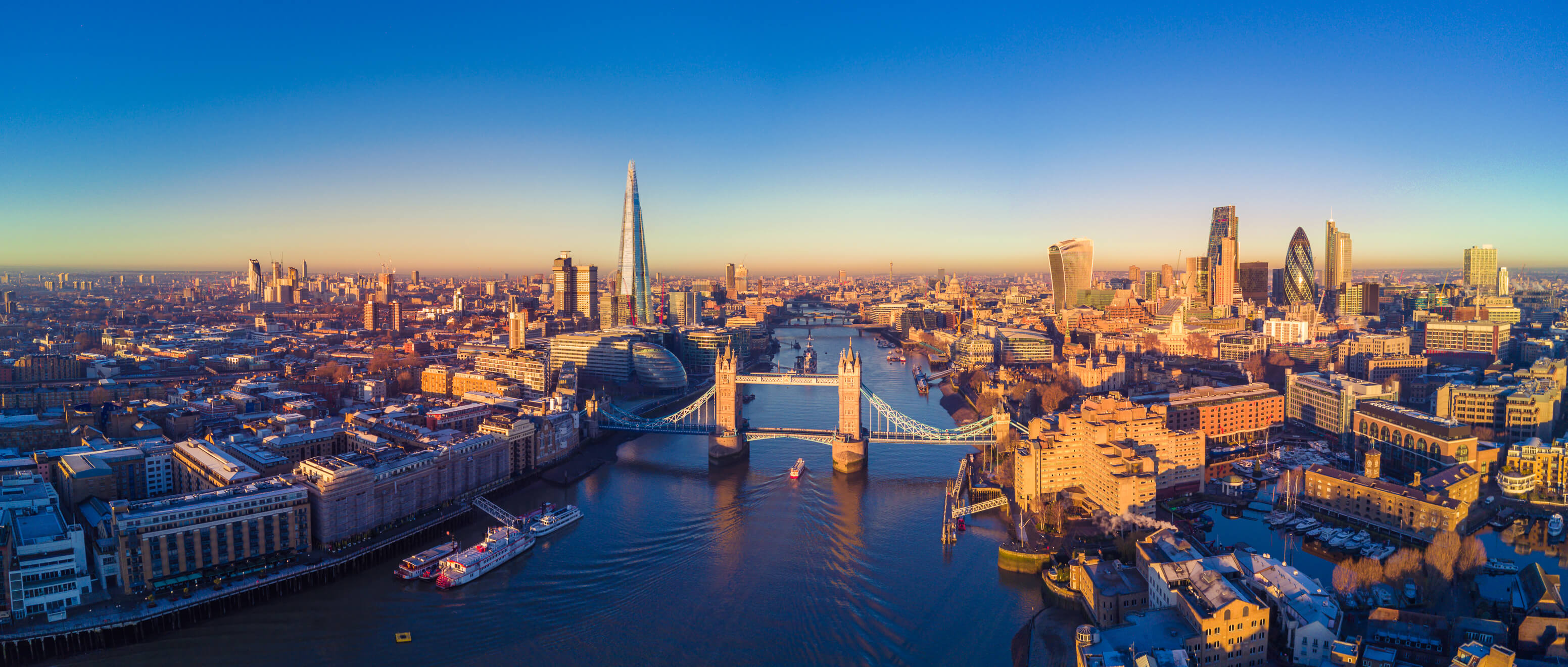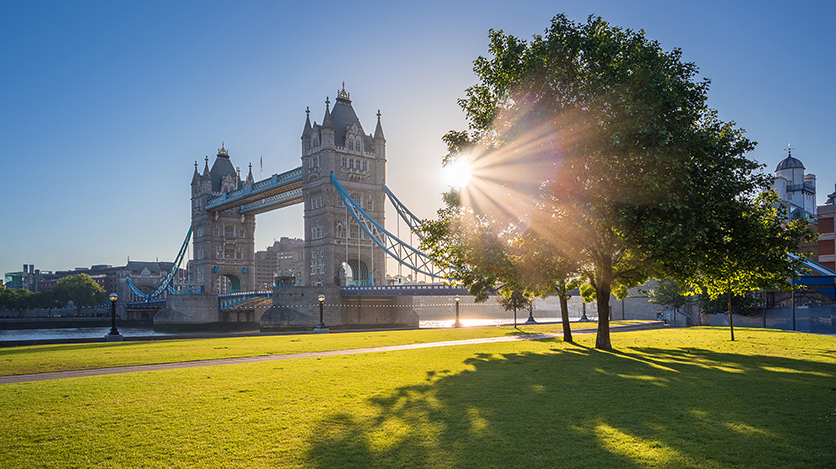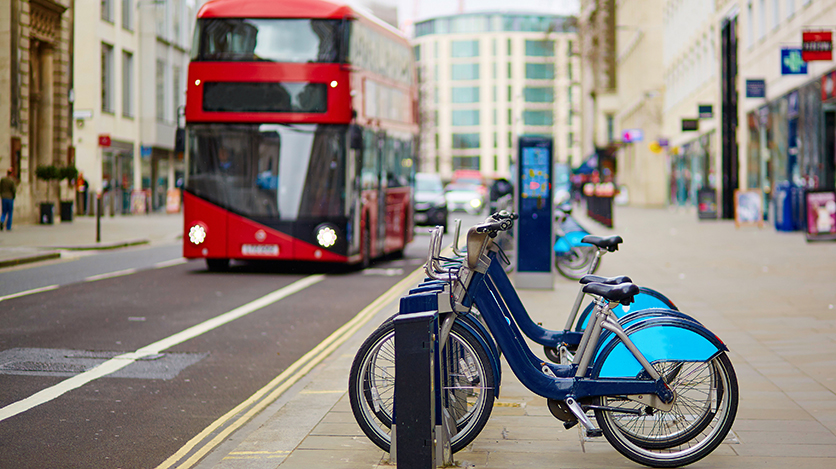
London is one of the most visited cities in the world, and with good reason too! There’s something for everyone in London, whether it be history, culture, shopping, restaurants or nightlife.
In truth, it’s a lot to take in, which is why we’ve put together this comprehensive city guide for all things London, including when to visit, the weather, getting around and more. For more information on things to do in London view our guide here plus check out our ultimate 100 Free things to do in London.
When to Visit London

One of the great things about London is that it can be enjoyed all year-round, thanks to its mild climate but when is the best time to visit?
Summer
Summer is probably the best time of year to experience London, with warm temperature which can even exceed 30°C (86°F) if you’re lucky!
When the sun does come out, Londoners and tourists alike flock to the city’s many green spaces and bars to kick back and relax.
Of course, there is a downside to all this, as the city becomes much busier during the summer, especially during school holidays, where the sheer amount of people can make sightseeing a little tricky.
Autumn
As we move into autumn, things start to quieten down a little, but the city can be just as beautiful during this period as the temperatures tend not to drop below 10°C.
Again, there are busy periods, especially the October half-term and November, as we start to edge closer to Christmas and shoppers start to flock to the high streets.
Winter
Of course, winter is when London is at its coldest, so you’ll need to wrap up warm, but it’s worth it for the beautiful Christmas light spectacles across the city.
Winter is also the quietest time to visit the city (except in the build-up to Christmas and the January sales), and you’ll probably be able to pick up a good deal on your hotel and flights.
Spring
Like autumn, springtime is very mild in London, but don’t be surprised if you get caught out by the rain.
There are some dates that are definitely worth avoiding if you want to miss the crowds, such as Good Friday through to Easter Monday and the school holidays around this time as well.
London Weather
London (and the south-east of England in general) is one of the warmest parts of the country, but as with anywhere else in the UK, it can be unpredictable, with rain possible at any time, so it’s best to prepare for any eventuality when it comes to the weather in London.
For example, summers can be warm and pleasant, even with the odd heatwave, temperatures averaging at 23°C (74°F) in July, with highs of 30°C (86°F).
And in winter, you can expect temperatures to be below 10°C (50°F), although you probably won’t have to worry about snow or ice.
It’s spring and autumn where things get a little trickier to predict, with temperatures usually falling between 11°C and 15°C (52°F and 59°F), but the rain is never too far away either.
The city experiences an average of 109 rainy days throughout the year, although these are fairly evenly spread right through the year, making it hard to plan for!
Getting Around London

London is a big place, but luckily, it also has one of the best public transportation networks in the world too.
The most famous transport network in London (perhaps in the world is the London Underground (known as the Tube by the locals) and it’s by far the best way to get around.
London Tube Map
The London Tube map is instantly recognisable and shows all eleven lines (as well as the Docklands Light Railway, Overground and National Rail services), which cover the whole city, running between 5am and midnight, with a reduced service on Sundays.
The map is also split up into nine ‘zones’, and you’ll pay a different fare depending on how many zones you cross during your journey. Check out the Tube map below or head to TfL’s website to view a higher-res, zoomable version.
You can also pick up paper copies at any station, or tourist information centres around the city.
London Tube Fares
While you can pay for your Tube ticket with cash, it’s much better value to do so with an Oyster card or contactless payment card.
For example, a single journey in zone 1 will cost you £4.90 in cash, whereas that same fare paid for with an Oyster or contactless card will cost just £2.40. (Do bear in mind there could be charges from your bank if you’re using a card that was issued in another country).
All you have to do is tap your card at the yellow reader at the gates at the start and end of your journey (or just at the start if you’re using a bus or tram).
You can purchase a Visitor Oyster card before you head to London and fill it up using your local currency, or you can top it up at any Tube, DLR or Overground station, or at thousands of shops across the city.
There’s also a TfL Oyster app which you can use to keep your card topped up with credit.
It’s also worth knowing that kids, students and elderly travellers all qualify for discounts on the Tube as well.
Again, head to TfL for a full rundown of the prices across the various zones.
London Tube Operating Hours
The exact operating hours of the Underground vary depending on which line you’re travelling on, but they usually start running at 5am and stop at around midnight Monday to Saturday, but with a reduced service on Sundays.
Recently, a Night Tube service has started running, with 24-hour services on some lines at weekends too.
London Tube Accessibility
Unfortunately, the Underground isn’t the most accessible for disabled travellers, with most stations accessed via flights of stairs.
However, some stations do have escalators and lifts, so check out this step-free Tube map to find out which are the most accessible.
It’s also worth knowing that most Tube platforms have a step of about 2cm onto the train, so if this is an issue for you, be sure to wait near the front of the platform so that the driver can allow a bit more time for you to get on and off.
The TfL website has much more information regarding accessible travel around London.
London Buses
While the Tube is probably the best way to get around London, it’s far from the only way, with the iconic red buses serving the city 24-hours a day.
The most important thing to know about the buses is that you cannot pay with cash, so you’ll either need an Oyster or a contactless payment card.
A single fare will cost £1.50, but you can make unlimited journeys for an hour after you first touch in and will only ever pay a maximum of £4.50 a day.
Buses only stop at their designated stops and you may have to alert the driver to let him know that you want them to stop, which you can do by pressing the red buttons throughout the bus.
The TfL London bus map is the best place to plan your route and see scheduled times, but you can also pick up paper copies from the TfL visitor centres.
All of the city’s buses are low-floored vehicles and have a retractable ramp, so they’re easy to board for wheelchair users, who also travel for free.
The buses are ideal if you’re travelling somewhere not covered by the Tube, or are travelling outside of Tube operating hours, but they’re also a good way to see a bit more of the city during your journey!
‘Boris Bikes’ in London
Officially known as ‘Santander Cycles’, this relatively new scheme has over 11,000 publically available bikes at over 750 docking station around the city which you can hire with just your bank card.
Once you’ve hired a bike you can take it wherever you like, for just £2 for every 30 minutes that you use the bike.
Cycling can be a fun way to get around the city while taking in some of the sights and there are some great bike rides to be discovered in London too.
Tips for using public transport in London
- Always stand on the right when using escalators, so that you don’t get in the way of rushing locals!
- Always allow others to leave the train before you board.
- On busy services, move as far down the carriage as possible to allow more people to board the train.
- Offer your seat up to elderly travellers or those who are pregnant or travelling with small children if they don’t have a seat.
- Try not to travel during peak hours (7-9am and 5:30-7pm) when most people will be rushing to and from work.
- Always hold onto handrails provided when you’re on the move.
London Visa Requirements for US Citizens
Those from within the EU don’t require a visa to visit the UK, and while US citizens technically don’t need to apply for one before travelling, they will need to obtain a tourist visa upon arrival in the UK.
These are granted when you present your passport at the airport, free of charge, as long as you meet the UK Immigration Rules (essentially as long you’re travelling for tourism purposes and can prove that you intend to travel back to the US).
If you’re travelling to London to study, then you’ll need to apply for a short-term study visa, which costs £125.
A handy tool you can use is the gov.uk questionnaire to check if you need a UK visa.
Map of London
London Time
London sits in the Greenwich Mean Time time zone meaning the time is UTC +0 hours, although, during daylight saving time, which is between March 25th and October 29th, the clocks go forward one hour.
In fact, London used to set the standard for civil time worldwide, with the time being set according to the mean solar time at the Royal Observatory in Greenwich.
London actually had its own time zone up until 1847, which thankfully is no longer the case!
Plan your London Trip
So, if you’re thinking of booking a trip to London, be sure to check out our: